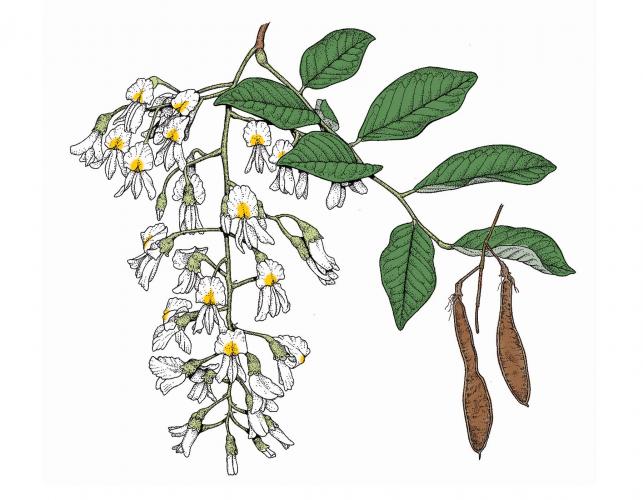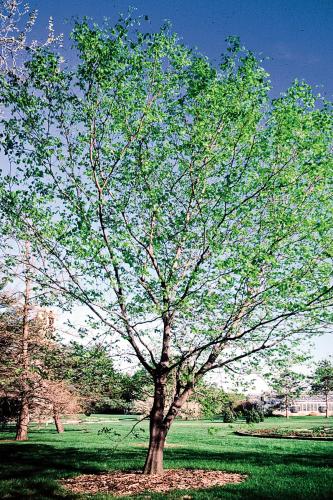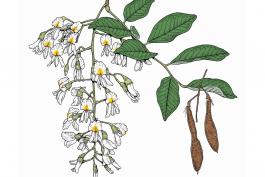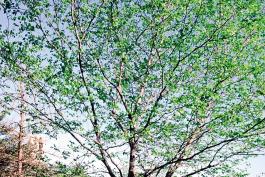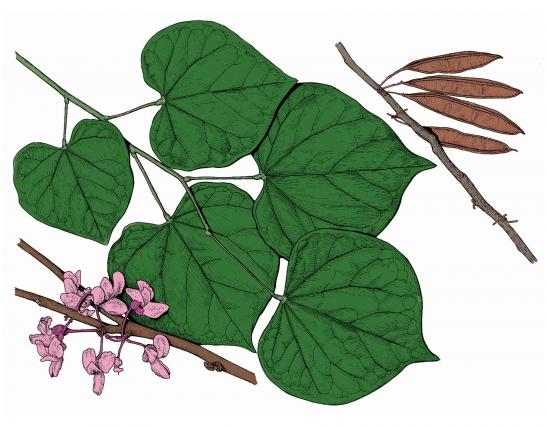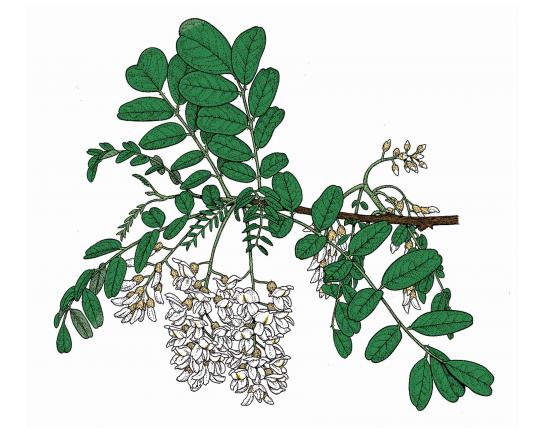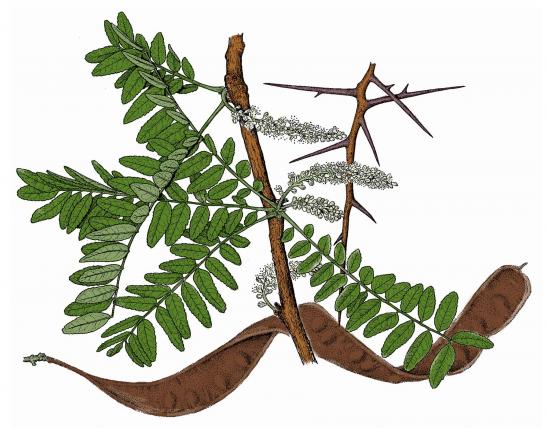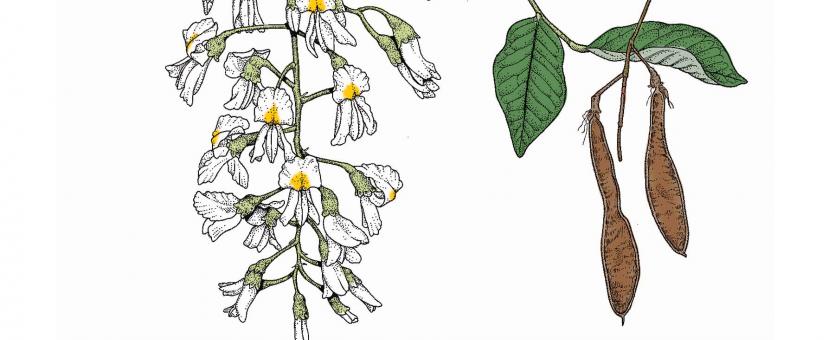
Yellowwood is a medium-sized tree with a short trunk and a broad, open, rounded crown.
Leaves are alternate, feather-compound, 8–12 inches long, with 5–11 leaflets, not always in opposite pairs; leaflets oval to egg-shaped to broadest in the middle, 2–4 inches long, 1½–3½ inches wide, margin entire, abruptly pointed at the tip; leaf stalk enlarged at the base, enclosing a bud.
Bark is gray to light brown, thin, smooth.
Twigs are slender, smooth, shiny, zigzag, brittle, reddish-brown, pores numerous; bud at end of twig absent, side buds usually 2–4, clumped, appearing as one, hairy.
Flowers in May–June, in elongated, hanging clusters 10–14 inches long; flowers white, fragrant, about 1 inch long, pea-shaped with 5 petals; upper petal founded with a yellow blotch at the base.
Fruits in August–September. A flattened pod 3–4 inches long, late to split into 2 halves, persisting into winter. Seeds 2–6, flattened, dark brown.
Height: to 60 feet.
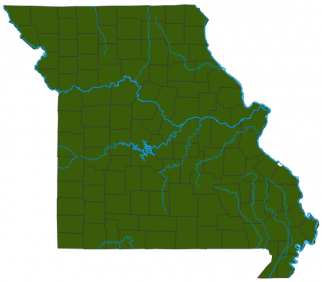
In nature, primarily limited to a few southwestern counties, but it's cultivated statewide.
Habitat and Conservation
Occurs along moist wooded slopes and bluffs and along rocky drainages in somewhat sheltered areas. Yellowwood is often planted as an ornamental. It grows well in partial shade or sun and is relatively free of serious insect pests and diseases. It grows slowly and its branches are somewhat brittle, making it relatively susceptible to storm damage.
Status
Native Missouri tree. Very popular as a landscaping ornamental.
Human Connections
Planted as an ornamental. The wood has been used for fuel and for gunstocks. Early Appalachian settlers made a yellow dye from the root bark (hence the common name).
Ecosystem Connections
Trees are homes for numerous animals, from insects to birds and more; they provide food for many other animals, such as the bees that visit their flowers and the many animals that chew on their leaves. With their canopies, trees provide a shady habitat essential for many plants and animals.
